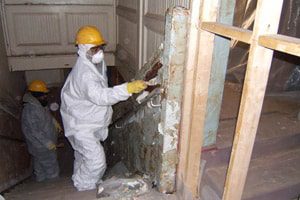
Paint makers are fighting against a court ruling mandating them to spend up to $2.5 billion to remove lead paint from hundreds of thousands of homes in the state of California. Paint makers have long succeeded in skirting litigation that blames them for health problems in people who have suffered health problems associated with lead […]
 Paint makers are fighting against a court ruling mandating them to spend up to $2.5 billion to remove lead paint from hundreds of thousands of homes in the state of California.
Paint makers are fighting against a court ruling mandating them to spend up to $2.5 billion to remove lead paint from hundreds of thousands of homes in the state of California.
Paint makers have long succeeded in skirting litigation that blames them for health problems in people who have suffered health problems associated with lead exposure from paint, according to The Wall Street Journal. Since 1978, lead has been banned from residential paint in the United States. Lawsuits have failed in a number of states including Rhode Island, Missouri, Illinois, New Jersey, and Wisconsin, typically because plaintiffs were unable to prove lead to be a public nuisance, the legal standard that requires proof that the lead-containing item interferes with public health and safety.
The legal battle has been ongoing in California for 13 years and made it to trial in mid-July in state Superior Court in San Jose. Judge James Kleinberg is presiding over the case without a jury and will likely issue a ruling before the end of the year, according to the Journal. While plaintiffs involved in lead paint lawsuits continue to work toward proving that lead is a public nuisance, in California, courts have allowed the lawsuit to continue as a public nuisance case; proof of paint company liability is still required.
The lawsuit was filed by 10 city and county governments in California against Sherwin-Williams Co.; NL Industries Inc.; ConAgra Grocery Products Co.; DuPont Co.; and Atlantic-Richfield Co., which is owned by BP PLC. The court order requires that the defendants—current or prior makers or distributors of pigments and paints—pay for lead paint hazard removal from homes and other buildings in Los Angeles County and other places where local governments have joined the legal action, the Journal reported. Cleanup efforts could cost $1-$2 billion, according to expert witnesses.
According to the lawsuit, the defendants promoted lead paint use while being aware of lead’s risks. The lawsuit also quotes an internal 1904 Sherwin-Williams publication that describes lead in paint as “poisonous in a large degree, both for the workmen and for the inhabitants of a house painted with lead colors.” A Sherwin-Williams attorney argued that the statement was part of an article about a study that was later “disproven,” according to the Journal.
Complete removal of lead paint from all homes is not sought; rather, the lawsuit seeks that lead paint be replaced or sealed on “friction surfaces,” including doors, windows, and floors in which continuous activity could release the leaded paint, the Journal explained. For their part, the defendants argue that there was no way they could know 50 years ago about the risks associated with lead exposure. The lawsuit argues that action is required “before children are harmed,” not after lead exposure.
Lead exposure has been linked to myriad health reactions, including, for instance, hearing loss, violence in youths, reproductive damage, cancer, and nervous system damage in adults. Lead accumulates in the body over time and pregnant women, infants, and young children are especially vulnerable and should avoid exposure to lead. Lead exposure in children and unborn children can lead to brain and nervous system damage; slowed growth; headaches; mental and physical retardation; and behavioral, learning, hearing, and other health problems. The developing brain is of significant concern because lead exposure may lead to long lasting effects that may continue into puberty and beyond.
Once the body is poisoned by lead, none of its organ systems is immune. Lead’s longer-term effects are not immediately manifested and many experts have long believe that no amount of lead exposure is safe. Classic lead poisoning is also known to lead to anemia, nerve and kidney damage, and, in severe cases, convulsions and death, according to a prior Scientific American report.


